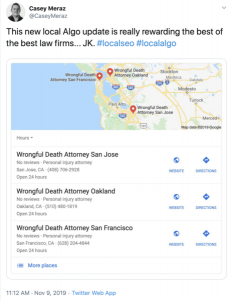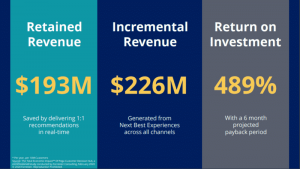The dream of many investment management marketers is to efficiently use data to create content that drives engagement and generate insights that support strategic decision-making. While those are both possible in theory, often reality looks very different. Most firms struggle with data that is unwieldy, overwhelming and underutilized. In fact, only one-quarter of investment management marketers feel they have good data processes, according to a recent poll.*
That’s why data was the focus of our most recent quarterly private marketing roundtable event, co-hosted by Synthesis Technology and Evalueserve. John Toepfer, CEO at Synthesis, served as moderator for a conversation with marketing strategy and operations professionals from mid-size and large investment managers about the challenges they face achieving their data goals, and how they can get on a better path.
Overwhelmed by Data
Although privacy laws and firewalls prevent the collection of some types of data, a far bigger problem for marketers is that they have much more data than they are able to use or manage.
The sheer quantity of data has increased exponentially in recent years, as both digital marketing tools and touch points have proliferated. In contrast to the simple marketing funnel of yesteryear, today clients and prospects determine their own, often circuitous, paths as they engage with your company via multiple traditional and digital channels — each of which generates a good deal of data.
At the same time, over the years, your company has likely added more tools to its technology stack than it has retired. The result may be a complex mix of applications that provide different types of data to different teams in different formats. The CMO of an investment company that was founded more than 50 years ago described their “hodge podge of new and legacy systems that don’t talk to one other.” But even newer firms may have multiple tools generating data that isn’t accessible to everyone who could use it.
A Roadmap to Success
While a new data technology tool (or several) can be part of the solution, today’s huge and growing array of such choices can actually add to the feeling of overwhelm. As of April 2020, there were more than 1,200 different marketing data technology tools on the market, many of which offer similar functionality.
The key to a better data future isn’t a new tool, but a well-thought out plan. “Moving to a robust data analytics process is a journey; it doesn’t happen all at once,” said Jan Choy, VP of data analytics at Evaluserve, a global data analytics firm. “But.” she adds, “you can make quick wins in just a few months.”
While every company is different, Jan outlined a basic roadmap she follows to help companies across industries get the most out of their data.
Step 1: Start measuring and reporting. Use whatever tools you currently have (such as Excel) to do some basic performance measurement. As you start to quantify when, where and how different audiences engage with your communications, you gain more clarity about where to focus your efforts, as well as your needs for additional tools.
Step 2: Manage campaigns. Determine how you’re going to use content to generate leads and build client engagement, including identifying which topics will position you as a trusted partner.
Step 3: Develop a 360-degree view of clients. Map out the client journey across multiple channels to understand the drivers of engagement at each touch point.
Step 4: Measure attribution. Determine the contribution of each channel on client engagement, conversions and incremental revenue. This attribution information can help demonstrate your team’s impact and quantify the return on investment in marketing.
Step 5: Enhance the overall client journey, including personalizing experiences across channels.
Step 6: Reverse-engineer client journeys. By better understanding the most successful experiences, you can focus on efforts that tend to lead to positive outcomes.
New Must-Have Marketing Skills
Many of the functions required to transform data into insight at scale haven’t traditionally been in the marketing domain. For example, you need to consolidate and standardize various data points that might be captured and stored separately. You also need to implement functional pipelines that enable different groups and applications to access the same data, in a format that is meaningful for each.
No matter how skilled your marketers are, chances are they aren’t trained to perform this kind of data engineering and analysis. That’s why more and more firms are building out their marketing benches by adding dedicated data scientists to the team. One senior marketer at a large global investment firm reported that they plan to double the number of data analysts on staff in the coming year.
The best time to get started on your data transformation roadmap is before your systems get too complex. Firms at earlier stages of growth, with simpler infrastructures and executive leadership structures, can often move more quickly through the process. But no matter what your size and stage, the sooner you can start making data-driven decisions, the better.
*Source: Content Marketing Automation Benchmarking Survey, FUSE Research Network and Synthesis Technology, December 2020.
Business & Finance Articles on Business 2 Community
(44)
Report Post





